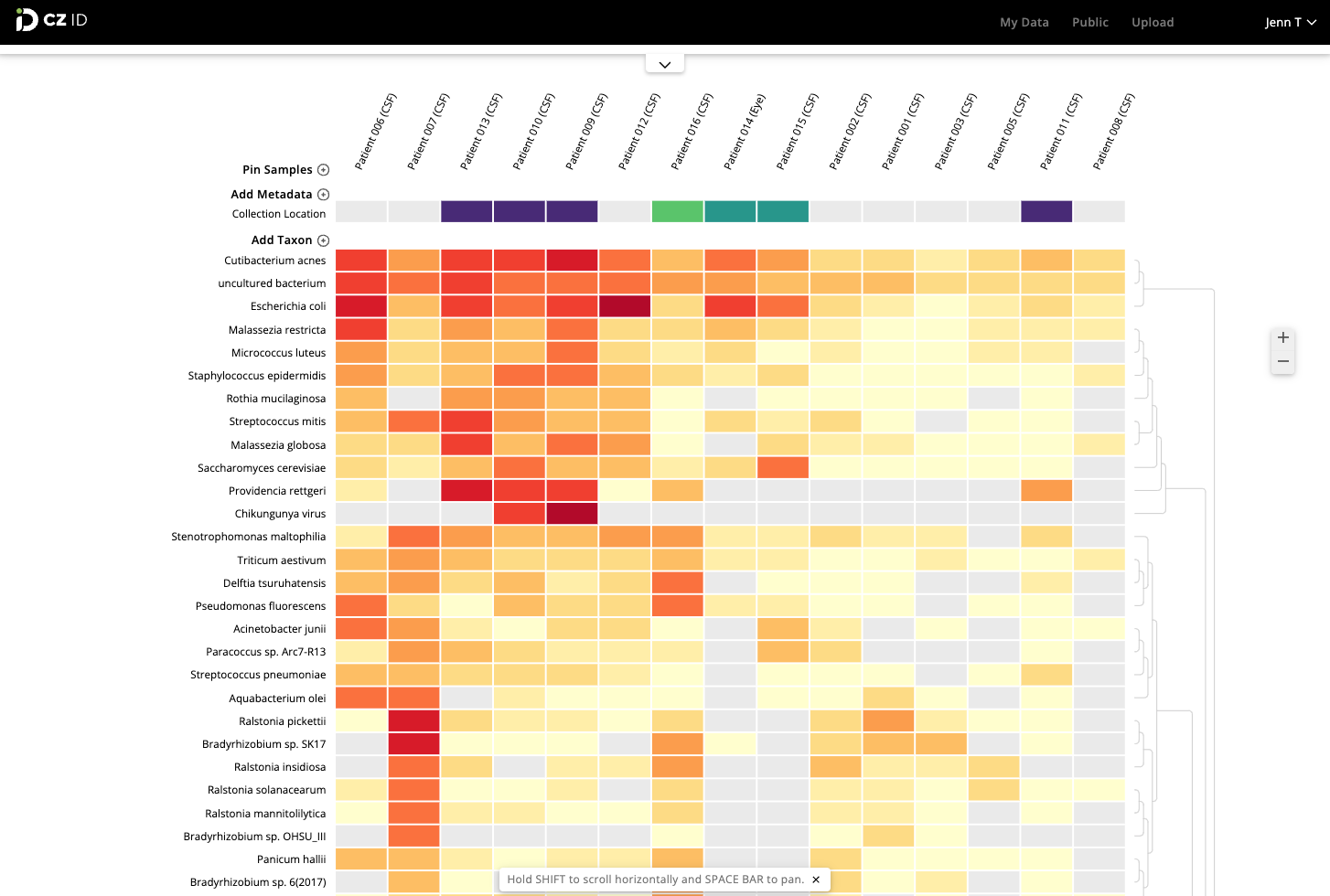The Chan Zuckerberg Initiative (CZI) is committed to leveraging our core principles of collaboration, open science and diversity, equity and inclusion to realize a more inclusive future for all. In doing so, we build tools with dedicated technology teams and fund technology development to accelerate progress in science and education. From software development to product design to research analysis, CZI’s “Tech Talks” series features members of our technology teams who are working to develop tools that drive innovation and create impact.
In this edition, we speak with Jennifer Tang, Lead Product Design Manager for CZI Science. Jennifer recently celebrated her 4-year anniversary with CZI, and, during her tenure, her role has grown from supporting product design for the Infectious Disease team to leading design for the entire science team.
Jennifer graduated with a Bachelor of Fine Arts degree and started her career working at a graphic and digital design agency. Her agency days exposed her to clients across a broad range of industries and sizes, from fitness and finance to start up and multinational organizations.
Jennifer soon discovered that she most enjoyed working on digital products, which led to her next role at a product design agency where she learned the importance of being scrappy, communicating ideas visually to create alignment, and solving complex product design problems by quickly applying user insights into design solutions. She also worked with a front-end framework that addresses redundant coding cycles, which continues to influence the way she guides her team to work scalably. Jennifer is now applying these experiences to help build tools that make the information scientists need easier to access.
We don’t simplify the science or take away any of its complexity. We simply make information easier to access and use.
What does it mean to be a product designer, especially at CZI?
As a product designer at CZI, I get to work on the world’s most fascinating problems. I help scientists identify and understand infectious diseases, and speed up their research by designing user-friendly tools. I also help the team make sure that we’re solving the right problems and designing solutions that actually meet the needs of our users. I could design the most beautiful interface, but it wouldn’t matter unless I’m solving the right problem for our users. At CZI, I’m able to make design decisions based on what’s best for the users of our tools. Without competing business priorities, we’re able to focus on what’s best for our scientists and what will help them advance their research.
In your full-time role at CZI, what tools are you currently working on?
During my tenure at CZI, I have been primarily working with the Infectious Disease team, including on the tools Chan Zuckerberg ID (CZ ID) and Chan Zuckerberg GEN EPI (CZ GEN EPI)*. I also now lead our science design and science design systems teams, which support our entire portfolio of science technology products. The science design systems team works on multiple tools and enables our teams to work faster while keeping high-quality designs. I believe collaborating and working across teams is central to speeding up tool development and ultimately helping get tools to scientists faster.
What is the role of design in accelerating biomedical science?
A designer’s role is to ensure that the solutions and experiences we develop are based on a full understanding of the people who are going to use them. By designing from the perspectives of the people we are designing for, we ensure that the tools we make are easy to use, intuitive and consistent, and that users aren’t bogged down by trying to learn how to use the tool.
We also use design to facilitate how teams collaborate, explore challenges and ideate on what solutions could look like. Often it’s hard to visualize solutions and determine how they might work. Designers are uniquely equipped to help teams reach clarity and alignment by visualizing ideas, incorporating users’ perspectives, iterating options, and facilitating discussions.
Design is key in helping us democratize our tools, reach a broader audience, and make our tools usable for scientists, especially those who don’t want to code. Our goal is to use design to accelerate science, for our tools to present the right information, and to streamline scientists’ workflows. We visualize data accurately in order to allow scientists — from bench researchers to public health officers — to explore and uncover insights.

CZ ID accepts sequencing data from researchers around the world and quickly processes the results to generate heatmaps, phylogenetic trees, and quality control charts to help scientists draw conclusions across samples. As the lead product design manager, Jennifer Tang uses design to allow scientists to visualize data accurately and uncover new insights.
Since you joined CZI, how have you been involved in advancing our design capabilities?
When I joined, I was the first product designer on the CZ ID team. With CZ ID, some basic functionality was already in place to run samples through the pipeline and get results. Since then, we’ve added many more ways for users to better interpret their data. These include guides that point out what might be pathogenic and able to cause illness, visualizations that help our users interpret multiple samples and identify patterns, and documentation that helps them understand what is happening with their data and how to interpret it. We’ve also enabled users to more easily identify what’s really important in their samples, and confirm and annotate their conclusions.
For all of our tools, we make sure we have a deep understanding of the users’ needs and are addressing their pain points, enabling them to do their work faster.
How can the technology you work on make a difference in the future?
We are building technology to help scientists identify the cause of mystery illnesses, detect and track emerging biological threats, understand potential outbreaks, and understand microbial landscapes. Design has a unique ability to help users access the value of the products that we provide. We don’t simplify the science or take away any of its complexity. We simply make information easy to access and use.
The Chan Zuckerberg Initiative is a new kind of philanthropic organization focused on engineering change at scale. Interested in joining one of our product design teams to build software and support our partners developing tools to accelerate science and education? Explore CZI career opportunities now.
*Editor’s note: As of November 15, 2024, Theiagen Global Health Initiative (TGHI) will manage CZ GEN EPI, now renamed TheiaGenEpi. For further information or updates on the tool, please visit theiagenepi.org.

